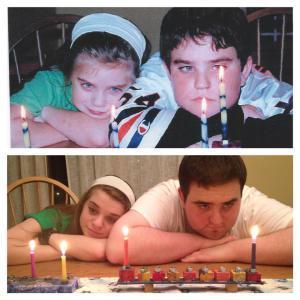Amy Sue Nathan's Blog: Women's Fiction Writers, page 34
January 8, 2014
Winners Announced for WHAT SHE LEFT BEHIND by Ellen Marie Wiseman
Stepheny Houghtlin
and
Jill Anderson
Please email your addresses to womensfictionwriters@gmail.com and I’ll pass them along to Ellen!


January 1, 2014
WHAT SHE LEFT BEHIND by Ellen Marie Wiseman: A Book Review and Giveaway To Kick-Off 2014
Happy 2014 Women’s Fiction Writers!
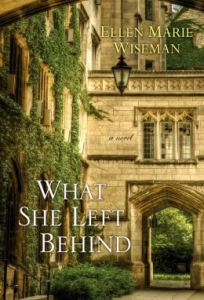 Let’s start the new year in style with a giveaway of TWO copies of Ellen Marie Wiseman’s new novel, WHAT SHE LEFT BEHIND.
Let’s start the new year in style with a giveaway of TWO copies of Ellen Marie Wiseman’s new novel, WHAT SHE LEFT BEHIND.
I don’t normally do traditional book reviews on WFW but I wanted to share my thoughts on this book and its author. I don’t do a lot of giveaways either, but it’s the new year and all, and what better way to usher in the new year than with a new book?
Just leave a comment below to be entered, and the winners will be announced on Wednesday, January 8th. I think I’m supposed to say that I received a copy of this novel from the author but promised nothing in return, or something like that. Actually the review was my idea and Ellen has thanked me for doing it. So, Ellen, you’re welcome. (Now get back to work on your next novel!)
WHAT SHE LEFT BEHIND is Ellen Marie Wiseman’s second novel. If I gave out stars I’d give it five. The novel is set in the present and in the past, which I always find fascinating, because the thought of doing that myself makes my head hurt. So this is both contemporary and historical fiction in which the author seamlessly weaves together two plots and a compelling cast of characters amidst a detailed and haunting setting.
Starting in 1929 we have Clara Cartwright, an eighteen-year-old from a wealthy family who falls in love with an Italian immigrant. I guess I don’t have to tell you that Clara’s father and mother are having none of that nonsense. They actually send her to a “home for nervous invalids” presumably until she gives in and gives up her boyfriend, or at least that’s what Clara thinks. But no one comes to take Clara home. Instead, after the stock market crash when her father can no longer afford the expensive care (incarceration, really) Clara is sent to a public asylum. And I’m sure I don’t have to tell you those weren’t very nice places in the 1930s. Wiseman’s research on the Willard State Hospital is remarkable. There were times that, in the best way possible, I had to shut one eye while I was reading. (This is like looking in the mirror and closing one eye, it buffers the view.) The hospital, its grounds and inmates patients are incredibly vivid in heartwarming and troubling ways. The best parts about Clara were her awareness and her spirit. She never gave in or gave up even though the world seemed to give up on her. There was a tenacious spirit in Clara that was echoed in the present day chapters of the novel.
In the present day we have a teenager named Izzy who’s in a new foster family. Izzy’s mother killed her father ten years before and she hasn’t seen her mother since. When Izzy’s foster parents, museum workers, involve her in a project to help clean out and categorize the belongings from the shuttered Willard State Hospital, Izzy finds Clara’s suitcase. I felt for Izzy immediately—she was an angry kid who didn’t want to be angry anymore. Stepping outside herself and into Clara’s life through letters and belongings eventually leads Izzy to realizations of her own. Izzy is not abandoned in the same way Clara was, but they shared the same yearning to belong to a family, and drive to find peace in their lives and hearts.
The two story lines are interconnected in overt and subtle ways throughout the novel. Wiseman writes really beautiful prose—and how I wish there was a more eloquent way to say that, but sometimes simple is best. As I read the book I simply thought, “Wow, this girl can write.” Of course I knew that because her debut novel, THE PLUM TREE, is one I read in one day. Wiseman’s writing and story-telling is cranked up a notch in WHAT SHE LEFT BEHIND, and that’s saying something. THE PLUM TREE was spectacular historical fiction about WWII Germany.
So what makes WHAT SHE LEFT BEHIND women’s fiction? The complex journeys of its main characters, Clara and Izzy. Past or present, in this novel readers see how nurture can both win and lose against nature.
Find out more about Ellen on her website by clicking here. And you can buy the book at all the regular buy-the-book places like your local bookstore, Amazon, B&N etc. If you want to see actual photos of Willard State Hospital, and other things that are part of WHAT SHE LEFT BEHIND, go to Ellen’s Pinterest board! You’ll be amazed!
Don’t forget to leave a comment to win!
Amy xo


December 11, 2013
Guest Post: M.L. Gamble’s Journey To Becoming Author Emelle Gamble
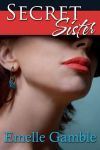 Publishing is like Chicago’s summer weather. Just wait a second, and it’ll change. And I’m thinking that’s not necessarily a bad thing because it’s invigorating, exciting, keeps us guessing (and we can’t do anything about it so we might as well embrace it. That goes for the weather and the changes in this industry).
Publishing is like Chicago’s summer weather. Just wait a second, and it’ll change. And I’m thinking that’s not necessarily a bad thing because it’s invigorating, exciting, keeps us guessing (and we can’t do anything about it so we might as well embrace it. That goes for the weather and the changes in this industry).
This is an exciting time for authors to be published. And I do mean be published, not self-publish (that’s fine too, just not what I’m addressing, so no hate-email, please). There are traditional publishers, small publishers, university presses, e-publishers, and publishers that are some crazy combination of all those and maybe something else. What this means, to me, is that there are opportunities more than there are not. I love the idea that editors are working. (Hello? I’m an editor.) So while one road was right for me, that same road might be right for you, or it may not. I think as writers the best thing we can do is encourage each other to do our very best and seek the very best for our stories.
Author Emelle Gamble has found that very best for her stories in different ways at different times, and she’s here today to tell that story. I hope you’ll share yours!
Please welcome Emelle Gamble to Women’s Fiction Writers!
Amy xo
M.L. Gamble’s Journey To Becoming Emelle Gamble
“Fasten your seatbelts, it’s going to be a bumpy night…”
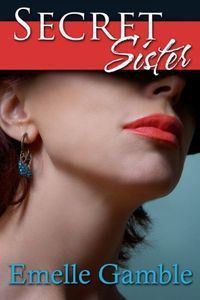 In my first iteration as a professional writer, twenty years ago when I wrote romantic suspense novels for Harlequin Intrigue as M.L. Gamble, when I got a new idea for a book (always the ending first, then the title), I’d get a thrilling, chilling little ‘pop’ of excitement inside my head. Sharp inhale. I knew the creative process had begun.
In my first iteration as a professional writer, twenty years ago when I wrote romantic suspense novels for Harlequin Intrigue as M.L. Gamble, when I got a new idea for a book (always the ending first, then the title), I’d get a thrilling, chilling little ‘pop’ of excitement inside my head. Sharp inhale. I knew the creative process had begun.
Very soon after that I’d begin plotting, outlining, and note card noting. The evenings saw the first pages blooming on my computer screen, the next weeks would find me bundling those exciting ‘first three’ chapters off (surely they were perfect) to my critique group. This would be followed by hearing from my honest, supportive and encouraging critique group that the chapters were, in fact, not perfect. So I wrote and rewrote, suffered middle book malaise, last chapter loathing, and re-evaluation jitters, but completed the first draft. And the second draft. And the fifth draft.
A few days before the contract deadline (most of the time) I printed the whole thing out on paper. Addressed a big-ass envelope. Drove to the United States Post Office. Bought postage and insurance (“It’s a manuscript, I’m a writer.” This sentence was always worked into conversation with the postal worker). Watched the now impressed (surely) postal employee throw the package in a bin, giddy with the knowledge it was going to end up on my New York Editor’s desk in 48 hours.
Then, four to six months later, there would be a knock on the door and you’d get a box of books. Beautiful books. Your books. This was the reason for the long hours and hard work. (The reason you lived!)
Exhale. Delirium. My book will be read, my story will be shared. I was an author!
Now, a decade later, the creative process hasn’t much changed, except for the fact it’s done electronically instead of on paper. (And I miss that postal worker!) But everything else, and I mean EVERYTHING else has changed. As the quote from the great Betty Davis in All About Eve says above, it’s been one heck of a bumpy night!
I am still contracted with a publisher, albeit a smaller one, but in this new publishing environment I immediately discovered that there was much, much more I had to do to give my new book a chance of success. For many publishing houses now no longer support authors as they did in the Wizard of Oz Golden days when I was at Harlequin. Publishers expect you, as an author, especially a new author, to not only write a great book, but hunt down your prospective readers and introduce yourself.
On behalf of my new novel, I’ve personally contacted over twenty review sites with email pitches for review consideration. I’ve asked friends and fellow authors to read an ARC (Advanced Reader Copy) and consider posting a review on Amazon and/or Goodreads, and have offered to spend the time required to read others’ books and return the favor.
I’ve spent many hours working with a pro to set up a website, without a pro to set up a Facebook Author page, a twitter account, a Goodreads Author account. And a blog. (Worth the ten hours it took figuring that out just to see the look on hubby’s face when I explained what a blog was. HA!)
I’ve designed storyboards to help create a book trailer and put it up on YouTube. I’ve talked to half a dozen local book sellers, three librarians, and two newspaper columnists about supporting my book. I’ve spent money on a website, book covers, copy editors, and a top notch review/ARC giveaway site, Netgalley. I’ve spent money on a Facebook ad campaigns and a Goodreads ad campaign and a publicity blog tour campaign. And then for good measure, I spent money on an ‘expert’ social media consultant who advised me to do everything I’d already done.
All told, I’m sure I’ve put in a couple of thousand hours working to promote my book, and spend two to three hours a day now on this part of being a professional writer. And frankly, I have no idea if any of this effort is going to result in my finding an audience for my book. Am I pessimistic about reaching women’s fiction readers in this new market reality?
No, though I am not optimistic about reaching enough readers to make any money above my expenses in the near future, I am however thrilled by a new aspect of writing in this new reality called ePublishing.
It’s called reader feedback. When I wrote for Harlequin, I got a few random fan letters, all lovely, a few complaining about a fact I got wrong (African parrots are not green and red), but now! Wow. I have been overwhelmed by the fact that the readers I have touched with this new book are giving me back tremendous feedback on their reading experience.
Daily I get emails, messages, tweets, book reviews, blog reviews, blog comments, a couple of personal letters, and a random phone call or three from old friends who saw something on FaceBook or my Website or Amazon and bought and read my book. And I’ve found that, while my novel deals with many emotion-charged topics about marital trust and personal friendships and loyalty, almost everyone has rushed to tell me it is almost impossible to put down, and that it really got to them. People have cried! Been upset! Got mad at me. And several say they won’t ever forget it!
Wow again.
This feedback, this connection with readers, has turned a somewhat solitary writing experience into one much more personal. And more fulfilling. Also a little bit shocking, in the sense that for the first time I am seeing the names and faces of people who are reading my book and talking about it with their friends.
More than once I’ve got a chill and understood how writers at past moments in history were face to face with their audience, seeing their reaction to their stories as they were told. This proximity to readers is exhilarating, and a little bit intimidating. Now I have people named Sue in Oregon, and VitaJax and Zee in Mauritius and Victoria in Australia and Anna from Michigan, all waiting for my next book, and I’m feeling the pressure not to let them down!
But I wouldn’t trade this writer’s life for the world.
Yes, everything I thought I knew has changed about marketing a book, and the writer’s place in the introduction of their work to their readers. As my journey as an author continues, I find it full of surprise and wonder, offering the yin and yang of the most necessary of all human activity, connecting with other people.
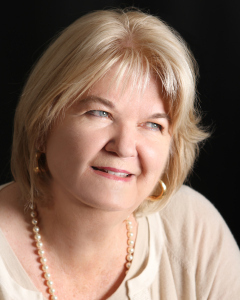 Emelle Gamble became a writer at an early age. At six years old she was bursting with the requisite childhood stories of introspection, and this itch to tell tales evolved into bad teen poetry and tortured short works that, thankfully, never saw the light of day, or an editor’s red pen. She took her first stab at writing a novel in an adult education class in Mobile, Alabama when her kids were in bed for the night. As ‘M.L. Gamble,’ she published several romantic suspense novels with Harlequin Intrigue.
Emelle Gamble became a writer at an early age. At six years old she was bursting with the requisite childhood stories of introspection, and this itch to tell tales evolved into bad teen poetry and tortured short works that, thankfully, never saw the light of day, or an editor’s red pen. She took her first stab at writing a novel in an adult education class in Mobile, Alabama when her kids were in bed for the night. As ‘M.L. Gamble,’ she published several romantic suspense novels with Harlequin Intrigue.
Soul Mate Publishing has now contracted for two works of romantic women’s fiction, Secret Sister, in July of 2013, and Dating Cary Grant, an early 2014 release.
Always intrigued by the words ‘what if’, Gamble’s books feature an ordinary woman confronted with an extraordinary situation. Emelle celebrates the adventurous spirit of readers, and hopes each will enjoy the exciting and surprising journeys her characters take.
Emelle lives in suburban Washington D.C. with her hero of thirty years, Philip, and two orange cats, Lucy and Bella. Like all good villains, the cats claim to have their reasons for misbehaving. Her children are happily launched on their own and are both contributing great things to society, their mother’s fondest wish. Emelle welcomes any reader interested in emailing her at emellegamble@gmail.com and hopes they will visit her website, http://www.emellegamble.com or her Author Emelle Gamble FaceBook page.
Website: www.EmelleGamble.com
Email: EmelleGamble@aol.com
My Blog: emellegamble.blogspot.com
Facebook: https://www.facebook.com/Emelle.Gamble
Twitter: https://twitter.com/EmelleGamble
Goodreads: https://www.goodreads.com/author/show/7123746.Emelle_Gamble
Blog Tour: http://reviewsbymolly.com/goddess-fish-blog-tour-review-secret-sister-by-emelle-gamble/
Secret Sister on Amazon: http://www.amazon.com/Secret-Sister-ebook/dp/B00DUL4LQA


December 4, 2013
Author Mingmei Yip Says That When You Know A Subject Deeply, The More Lightly You Can Use It In Your Writing
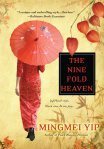 One of the perks of hosting Women’s Fiction Writers is being able to read and think about the interviews before they “go live” on the Internet. I love what Author Mingmei Yip has to say about incorporating culture into fiction. She says, “The more you know, the more lightly you can use your learning when you write.” I hadn’t thought of it that way before. When a writer knows a subject well, he or she can be more judicious in parceling out that information in the book. With an inherent understanding of this element in a novel,there’s no need to beat the reader over the head with it. (And they are grateful) Do you agree? Share your thoughts!
One of the perks of hosting Women’s Fiction Writers is being able to read and think about the interviews before they “go live” on the Internet. I love what Author Mingmei Yip has to say about incorporating culture into fiction. She says, “The more you know, the more lightly you can use your learning when you write.” I hadn’t thought of it that way before. When a writer knows a subject well, he or she can be more judicious in parceling out that information in the book. With an inherent understanding of this element in a novel,there’s no need to beat the reader over the head with it. (And they are grateful) Do you agree? Share your thoughts!
And please welcome Mingmei Yip to Women’s Fiction Writers!
Amy xo
Author Mingmei Yip Says That When You Know A Subject Deeply, The More Lightly You Can Use It In Your Writing
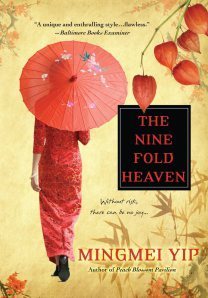 Amy: Congratulations on your fifth novel, THE NINE FOLD HEAVEN, which takes place in Shanghai in the 1930s. What drew you to this time and place for this novel? And could this story have taken place anywhere else?
Amy: Congratulations on your fifth novel, THE NINE FOLD HEAVEN, which takes place in Shanghai in the 1930s. What drew you to this time and place for this novel? And could this story have taken place anywhere else?
Mingmei: I love history, because it is like a mirror reflecting all that’s good and bad in humanity. I think 1930’s Shanghai was one of the sexiest eras in world history, populated with larger than life characters: glamorous women, cynical politicians, and corrupt police. But also with idealists trying to help China find its way in the modern world. It was also a time of extremes – from sybaritic luxury to abject poverty. I have tried to describe both from the indulgences of the rich to the miseries of the poor.
Amy: Since you write about Chinese characters and weave in Chinese culture, what are some of the most important things you hope to impart to your readers?
Mindgmei: Though we read novels and watch movies for entertainment, I strongly believe that readers should also be given something more. Besides enjoying an escape filled with excitement and adventures, I hope my readers will discover some ancient Chinese wisdom and come to know a little more about human nature.
Amy: Your debut novel, PEACH BLOSSOM PAVILION, was published in 2008. What is the biggest change you’ve found in your own fiction writing—or your approach to writing—through the past five years?
Mingmei: After having written six full-length novels, now I write a lot faster and can find new ways to tweaking the plot and sub-plots to my satisfaction. Also, I like to think that I have lived with all my woman characters and grown with them as they struggle to overcome overwhelming odds and, sometimes, do the nearly impossible to reach success and happiness. Nevertheless, getting to the happy outcome requires knowing when to push forward and when to let things ride.
Camilla, the protagonist in my new novel The Nine Fold Heaven, knows that to have a chance at a happy life, she must somehow escape her bondage to gangsters and the violence that surrounds her. So she uses the wisdom of the ancient Chinese sages to plan her escape – and in the process learns to love.
Writing about strong women who never give up, I feel that they became my teachers. We all face obstacles on our journeys, but theirs are tougher and more miserable than most of us face. Now I have a comfortable life, but getting there was a long journey. I hope the examples of my characters will show the way to acquiring wisdom and even compassion.
Amy: Does the term women’s fiction ruffle your writer feathers?
Mingmei: No. I know a lot of writers do not like to be labeled. But unless the label is wrong, it doesn’t bother me. Though there are men in my novels, the focus is on women’s lives. There is love in my novels, but also dangers and thrills.
Amy: What’s your best advice for writing women’s fiction with elements of culture and heritage?
Mingmei: To learn a lot about your own heritage. I’m lucky that I have studied different aspects of Chinese culture over the years, so I can sprinkle my novels with poetry, philosophy, fortune telling, music, painting, even martial arts. So my advice is to read as much as you can on everything that interests you. Don’t just use the internet, but read serious books to get deeper knowledge. The more you know, the more lightly you can use your learning when you write.
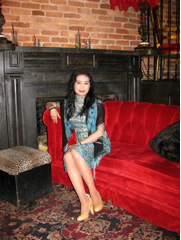 Mingmei Yip published her first essay when she was fourteen years old, now she has twelve books to her credit.
Mingmei Yip published her first essay when she was fourteen years old, now she has twelve books to her credit.
Mingmei’s new novel is The Nine Fold Heaven (Kensington 2013), story of an ex spy and singer’s emotional and dangerous journey to reunite with her lost lover and supposedly baby, and to revenge for her parents murdered by her gangster head boss.
Mingmei’s fourth novel is Skeleton Women (Kensington 2012), a story about a singer spy, a magician, and a gossip columnist scheming to survive the gang wars in the 1930ies, lawless Shanghai. It is linked to The Nine Fold Heaven, but can be read as an independent work.
Mingmei’s debut novel Peach Blossom Pavilion (Kensington 2008), story of the last musician courtesan of China, has received numerous favorable reviews and is now in its fifth printing.
Her second novel is Petals from the Sky, (Kensington, 2010) a Buddhist love story, which Booklist describes as “a serious, engaging story of faith, devotion, and the commingling of cultures.”
Her third novel Song of the Silk Road, (Kensington, April 2011) is a romantic adventure on China’s fabled route with the lure of a three million dollar reward. Publisher’s Weekly describes it as “once modern and traditional…Yip’s modern heroine’s quest is filled with unique companions, unforeseen dangers, unexpected joys, and bitter sorrows…”
Mingmei’s other works in English is Chinese Children’s Favorite Stories (Tuttle Publishing) and Grandma Panda’s China Storybook, (2013 Tuttle Publishing) which she both wrote and illustrated.
Besides a writer, Mingmei is also a renowned qin musician, calligrapher and painter. In Hong Kong, she was a columnist for seven major newspapers. She has appeared on over sixty TV and radio programs in Hong Kong, Taiwan, China and the US.
Visit Mingmei at: www.mingmeiyip.com, on Facebook, Twitter, Amazon, and Goodreads.


December 2, 2013
Ten Things I Love About Living And Writing In My Empty Nest

Stork atop empty nest. Not-so-subtle subtext intended.
My kids just went back to college after their Thanksgiving breaks and they’ll both be home in two-and-a-half weeks for a month or more. Their presence will refill the house with food and friends and football and ample noise, all of which I will enjoy. But, it will also mess with the empty nest mojo I’ve collected, stored and learned to love over the past few months.
Yes, you read that right. Learned To Love. (C’mon, what choice did I have?)
I did not like living alone (no offense to the dogs, they are great company) for the first two months. I thought the house was too big, too quiet, and the whole “higher education” and “college experience” thing had been grossly overrated. More specifically, I ”Hated it!” (Yes, I said that like the Blaine Edwards and Antoine Merriweather characters from In Living Color, thereby showing my 1) age, 2) great taste in TV shows. Click here if you have no idea to what I’m referring!)
So, during those two months, I wondered: How do people do this? How do they live without anyone else in the house? Who do they talk to? (I have always talked to myself, so I’m not sure why this was a question for me.)
And now I wonder—how do they live with people around all the time? Take note, I never lived alone. I commuted to college and lived in the house where I grew up, with my brother and parents, and lived there until I got married. Not something I’d recommend, but something for which do-overs are not available. The truth is, I didn’t want to move out and live alone.
And now? I’ve gone over to the other side. Let’s choose a cliché, shall we? I got into a groove, found my mojo, came to grips, saw the light. Whatever you call it, it was painful at first and then it felt fine. Even good.
It’s not that I don’t miss the not-so-little darlings. I do. But not the way I thought I would.
Here’s why:
I can go to bed at nine and no one says, “Are you kidding?” I always say I’m getting into bed to read but this is secret-mom-code for snoring within six minutes, do not dare wake me.
I watch much less TV. I think I enjoy watching TV with my kids and therefore the litany of shows don’t get watched. Unless of course it’s General Hospital or a Hallmark Christmas movie. Do. Not. Judge.
I eat dinner for lunch and popcorn for dinner. There is no guilt in messing with a family meal when the family in question is moi! I will cook for myself, but often midday as a break from writing and editing. That’s when I’ll turn on the TV (yep, there’s one in the kitchen) and putter a bit. By nighttime I want my hair in a clip and something in a bowl I can likely eat with my fingers. Dry Cheerios work too.
I can read my work aloud without someone asking who I’m talking to, and then saying, “Oh right.” I can also flail around a bit more figuring out how to write certain character movements and actions. I call that Method Writing.
I make my own schedule. College kids don’t require a schedule but when there are other people around there are accommodations made for them, and in return. If someone is sleeping, we’re quiet. I don’t cook food if the smell is offensive to someone else (daughter doesn’t like curry, or fish). We remove other’s clothing from the dryer. We see if someone needs something from the store. Not Any More! Not that I mind—ever—but it’s kind of liberating to go to Walgreens and NOT wonder if someone else needs deodorant.
I realized that my primary designation as Mom (or Momma, as my daughter calls me) hasn’t changed a bit. I’m still a mom first. To them and to me. That’s who I am. I just don’t have to do mom things first all the time anymore. This was a big revelation for me because all I ever wanted to be was a mom and a writer.
Sushi is affordable when ordering for one. ‘Nuff said.
Inherent privacy. There is little privacy for a single mom with two kids and two dogs. Once the kids were old enough to not want to know every time I went to the bathroom, the dogs figured out the tile floor was the coldest in the house. I couldn’t go anywhere alone. Now, everywhere in the house I am alone. I don’t have to go in another room to have a private telephone conversation or talk to a client. I can use speaker phone. This is huge.
I worry less. Before my son went away to college my cousin told me that if I don’t hear from the university, the police, or the hospital, then he’s fine. I took that advice to heart. I sleep like a rock when my kids are away, and when they’re home I wonder where they are and what they’re doing and when they’re coming home. I also wake up throughout the night. Luckily they are amazingly tolerant and touch base with me when they’re out, and when they get home.
When my kids come home, I think they are much more awesome than when they left. Even if it was just weeks before. Cheesy, but true. I mean, c’mon. Look what they did for me. Even if someone finished the stuffing or and put a paper plate in the sink or or came home at three in the morning, there is no way around how awesome this is. (When I hit them up in a decade to do it again, I’ll let you know how it goes.)
Check out my new freelance editing site!
EDITOR AMY
Making the page a better place—one em dash at a time.


November 26, 2013
Author Kristina McMorris Talks About Dual Timelines, Backstory, And The Inspiration for THE PIECES WE KEEP
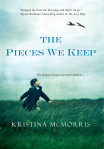 Congratulations to Kristina McMorris! Her third novel, THE PIECES WE KEEP, is available today! Just in time for Thanksgivingukkah presents, and in plenty of time for Christmas giving! Lucky us!
Congratulations to Kristina McMorris! Her third novel, THE PIECES WE KEEP, is available today! Just in time for Thanksgivingukkah presents, and in plenty of time for Christmas giving! Lucky us!
I love historical fiction and nothing makes me happier than when Kristina McMorris launches a new novel, especially when she’s here on WFW to share her insights on writing a dual timeline, why historical fiction is so appealing to readers, and how, as writers, we can work to avoid the dreaded (cue scary music) backstory dump.
Don’t forget to watch the trailer for THE PIECES WE KEEP at the end of the interview. Not only does it offer insight into Kristina’s new novel, but it’s so fun to see and hear her speak (she’s so eloquent).
Please welcome Kristina McMorris to Women’s Fiction Writers!
Amy xo
Author Kristina McMorris Talks About Dual Timelines, Backstory, And The Real Life Inspiration for THE PIECES WE KEEP
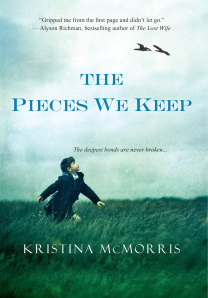 Amy: THE PIECES WE KEEP has a little boy, and his fears, as a driving force. As a mother, and one who dipped into your own life for inspiration, was this difficult to write?
Amy: THE PIECES WE KEEP has a little boy, and his fears, as a driving force. As a mother, and one who dipped into your own life for inspiration, was this difficult to write?
Kristina: For me, it was actually the opposite. Part of the inspiration behind the story even originated with my oldest son. When he was a toddler, he used to talk about a grandmother who didn’t exist. With this in mind, it was fairly easy for me to imagine what it would feel like to take the journey of my character, a mother who strives to makes sense of something she doesn’t quite understand. And I think most mothers can relate to the feeling of wanting to do everything possible to protect their child, and the frustration of being unable to find a solution for their challenges.
Amy: You write in two time periods in this novel—now here’s the million dollar (that’s imaginary money, don’t get excited) question. Do you write one full timeline’s story and then the other and intertwine them? Or do you write it the way the reader reads it?
Kristina: When I started the book, I had every intention of writing the historical storyline straight through and then going back to interweave the contemporary one. But after a few chapters, I quickly realized it just wasn’t going to work. The two timelines are so closely connected (even though, at first, it might not seem that way to the reader) that I knew major revisions would be inevitable if I didn’t alternate the time periods as I went along. So, ultimately the way the reader experiences the story is exactly how it played out as I typed.
Amy: Dual timelines have become very popular in women’s fiction. Why do you think the combination of past and present works so well for readers?
Kristina: As a reader, I think it’s fascinating to see how a past event can cause a ripple effect in the future. Through interwoven timelines, we’re able to witness how the act of one person even decades ago can unknowingly alter the course of another person’s life down the road. And by learning about others’ errors, we’re given the chance to avoid making the same mistakes.
From a writing standpoint, however–especially when one of the timelines inherently has very high stakes, such as with WWII–I think the biggest challenge is to make sure the stakes are as equal as possible in both story lines. Otherwise you risk tempting the reader to skim the chapters that in comparison have a lower level of tension.
Amy: And what do you think of the term “women’s fiction?”
Kristina: I know some authors in the genre are uncomfortable with the term, and I can certainly understand their reasoning. Personally (literary critics’ snubs aside), I don’t view it as an indicator of quality–or lack thereof–but more of a generalization to help identify the primary target audience. Granted, my view likely stems from a decade-long background of PR and marketing. Besides, the term seems to be utilized much more within the industry than among typical readers. When asked, “What do you write?”, I’ve often found that answering “women’s fiction” can leave the person confused, while something more specific (like “WWII love stories” or even “book club-type novels”) generally piques their interest, as it gives a clearer picture of my books.
Amy: What’s your best advice for writers of women’s fiction, specifically, for a writer working to integrate research that’s factual into his or her work of fiction? (She asks, selfishly, lol)
Kristina: I once heard that backstory should be treated like a mirror that has shattered into tiny shards, each of them sprinkled throughout a novel, versus grouped in a clunky “info dump.” When it comes to incorporating historical facts into a novel, I treat them the same way. I think it’s important to remember that story and character progression have to come first, in order to maintain good pacing and avoid creating a novel that reads like a textbook.
Also, there have been many times I’ve stumbled upon an intriguing historical tidbit that I chose to incorporate into a story by making it active; for example, in my novel Bridge of Scarlet Leaves, rather than merely “telling” the reader how children of Japanese descent were taken from their American adoptive families, I allowed my protagonist to actually witness a family being forced to separate. It ended up being more powerful than a narrative mention and more natural than expository dialogue.
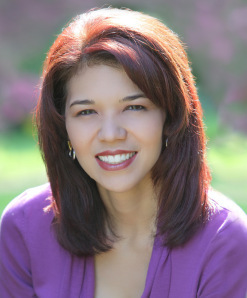 Kristina McMorris is the recipient of more than twenty national literary awards. A host of weekly TV shows since age nine, including an Emmy® Award-winning program, she penned her debut novel, LETTERS FROM HOME (Kensington Books, Avon/HarperCollins UK), based on inspiration from her grandparents’ wartime courtship. This bestselling book was declared a must-read by Woman’s Day magazine and achieved additional acclaim as a Reader’s Digest Select Editions feature, a Doubleday/Literary Guild selection, and a 2011 Goodreads Choice Awards semifinalist for Best Historical Fiction.
Kristina McMorris is the recipient of more than twenty national literary awards. A host of weekly TV shows since age nine, including an Emmy® Award-winning program, she penned her debut novel, LETTERS FROM HOME (Kensington Books, Avon/HarperCollins UK), based on inspiration from her grandparents’ wartime courtship. This bestselling book was declared a must-read by Woman’s Day magazine and achieved additional acclaim as a Reader’s Digest Select Editions feature, a Doubleday/Literary Guild selection, and a 2011 Goodreads Choice Awards semifinalist for Best Historical Fiction.
Kristina’s second novel, BRIDGE OF SCARLET LEAVES, was named a 2013 nominee for the prestigious RITA® Award and is frequently an official reading selection among book clubs, universities, and libraries throughout the country. Most recently, her novella, “The Christmas Collector,” appeared in the New York Times and USA Today bestselling anthology A WINTER WONDERLAND. Her novelette, “The Reunion,” will be featured in the forthcoming anthology titled GRAND CENTRAL (Berkley/Penguin, July 2014). THE PIECES WE KEEP is her third novel.
For more, visit http://KristinaMcMorris.com


November 21, 2013
Guest Post: From Series Romance To Women’s Fiction Author—How Kate Hewitt Did It All
 As a writer you have a choice. You can be discouraged by another writer’s success, or you can be inspired by it. I say—choose the latter. And in the case of Kate Hewitt (Katharine Swartz) you can be exhausted by it! I asked Kate one additional very important question. WHEN DO YOU SLEEP? Her answer? ANYTIME SHE CAN!
As a writer you have a choice. You can be discouraged by another writer’s success, or you can be inspired by it. I say—choose the latter. And in the case of Kate Hewitt (Katharine Swartz) you can be exhausted by it! I asked Kate one additional very important question. WHEN DO YOU SLEEP? Her answer? ANYTIME SHE CAN!
Please welcome Kate Hewitt to Women’s Fiction Writers!
Amy xo
From Series Romance to Women’s Fiction Author
by Kate Hewitt
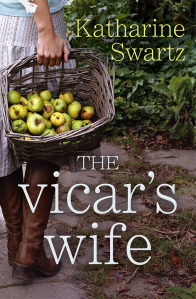 My writing career, like many things in life, has been a series of steps, with me growing in confidence and ability along the way. My first step towards publication was fourteen years ago, when I had a short story accepted by a women’s magazine here in England. The thrill of seeing my story in print—and actually getting paid to do what I loved—was incomparable. And having that first story accepted gave me the confidence to write and submit others, and within a few years I’d had over a hundred short stories published in various women’s magazines around the world.
My writing career, like many things in life, has been a series of steps, with me growing in confidence and ability along the way. My first step towards publication was fourteen years ago, when I had a short story accepted by a women’s magazine here in England. The thrill of seeing my story in print—and actually getting paid to do what I loved—was incomparable. And having that first story accepted gave me the confidence to write and submit others, and within a few years I’d had over a hundred short stories published in various women’s magazines around the world.
Writing a short story of usually no more than ten pages was perfect for that time in my life, when I had babies and small children, and little time or sleep. But after a few years I knew I wanted to try something bigger, and so I wrote and submitted my first serial to the same magazine that accepted my first story. A serial is the length of a short novel, written in short chapters that are published weekly in a magazine. Writing that first serial felt like climbing a mountain. I’d never written something so long or involved, and I can remember rocking my baby in the middle of the night (she was not a good sleeper!) as I brainstormed plot ideas and wondered how to make it all work.
Eight serials later I had the confidence to try something new. My stories had become longer, the plots more complex, and so I decided to try writing a series romance for Harlequin. I don’t think I could have managed it before then; in the past writing a ‘real’ book had felt too overwhelming. All those short stories and serials had been great preparation for tackling a series-length book, and my first attempt, to my amazement, was accepted. In the following years I wrote twenty-five more romances for Harlequin.
Then once again I felt the need to push and challenge myself. The secondary characters and plots were starting to take over my romances, and I loved grappling with different issues and ideas that generally don’t take center stage in a straight romance. My editor once told me that she thought I had ‘a bigger book’ in me, and in 2009 I decided to try to let it out. Of all the steps I’ve taken, this one was the hardest. A book twice the length of a series romance with far more characters, emotions, conflicts, and issues was incredibly challenging. I loved it, but it was tough! And that book, along with the one after it, were both rejected by various agents and publishers—and rightly so! After encountering so much success in writing, it was discouraging to have rejections and to essentially feel that I was starting over. I had to give myself a few pep talks along the way, reminding myself how I’d succeeded before, even when it seemed hard.
Then last year, when I should have been writing a romance, I procrastinated by writing something else—an idea that had literally just popped into my head. It was a women’s fiction story, and I wrote a hundred pages in two days, which was a record for me. I sent those pages to my editor, and she offered me a contract with Carina UK, Harlequin’s digital-first imprint.
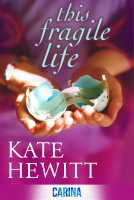 At the same time I’d finished another magazine serial, and a different publisher was interested in it if I lengthened and developed it into a proper novel. So in the space of a few weeks, I suddenly had two women’s fiction projects on the go! And now they have both been released into the wide world: This Fragile Life written under my pseudonym Kate Hewitt, and The Vicar’s Wife, written under my real name Katharine Swartz.
At the same time I’d finished another magazine serial, and a different publisher was interested in it if I lengthened and developed it into a proper novel. So in the space of a few weeks, I suddenly had two women’s fiction projects on the go! And now they have both been released into the wide world: This Fragile Life written under my pseudonym Kate Hewitt, and The Vicar’s Wife, written under my real name Katharine Swartz.
They are very different stories but both ones I have loved writing. This Fragile Life is in the vein of Anna Quindlen or Jodi Picoult; it is about two friends, one successful, driven, and infertile; the other aimless, carefree, and unexpectedly pregnant. When they arrange a private adoption between them neither of them expect the tensions and conflicts that arise to challenge their friendship—or what happens when a sudden development literally changes everything.
The Vicar’s Wife is a gentler story with two plot threads. The first concerns Jane, a woman in present day who makes the unlikely move from Manhattan to rural Cumbria, England. Her British husband decides he wants to move back home and they buy a former vicarage and attempt to settle into village life, with varying degrees of success. When Jane finds a shopping list written by a vicar’s wife in the 1930s, she becomes fascinated with this unknown woman and starts to research her life. The second plot thread concerns this vicar’s wife, Alice James, and her adjustment to marriage and village life. The more Jane learns about Alice, the more she questions her own choices, and learns to grow and change.
I am continuing to write both romance and women’s fiction, with follow-up books for both my my women’s fiction publishers planned for next year. Moving from series romance to books that are more complex and developed definitely has been a challenge—it has proved to be a whole new way of thinking about character and emotional conflict, and the story arc is far more sweeping than that of a romance. I enjoy having the space to develop different ideas and characters, but the scope and depth of such a book has been and continues to be rather daunting!
I don’t know what the next step on my journey as a writer will be; I feel very blessed to have taken as many as I have, and I am excited about the books I have planned. I hope you check out This Fragile Life and The Vicar’s Wife. Thank you for having me here!
Happy reading,
Kate
 Kate loves to hear from readers—visit her website http://www.kate-hewitt.com or you can contact her at katehewitt@kate-hewitt.com.
Kate loves to hear from readers—visit her website http://www.kate-hewitt.com or you can contact her at katehewitt@kate-hewitt.com.
THIS FRAGILE LIFE is on sale for $1.36 until December 9th on Amazon. For links to all Kate’s books, please visit her website by clicking here.


November 11, 2013
Worth The Wait! Author Renee Rosen’s DOLLFACE Took A Ten Year Road To Publication
 I was lucky to read an early copy of DOLLFACE by Renee Rosen, a novel of 1920s Chicago. Why does this historical novel belong on Women’s Fiction Writers? DOLLFACE is written from a women’s point of view. It’s an engaging, fast-paced, novel with full, rich characters with things to figure out about themselves, their lives and loves. And yes, there’s lots of action in 1920s Chicago as well. There are a few violent scenes (it is about gangsters) but these scenes are not gratuitous. They are part of the story. Only one made me flinch (and I’ll tell you which one if you’ve read the book).
I was lucky to read an early copy of DOLLFACE by Renee Rosen, a novel of 1920s Chicago. Why does this historical novel belong on Women’s Fiction Writers? DOLLFACE is written from a women’s point of view. It’s an engaging, fast-paced, novel with full, rich characters with things to figure out about themselves, their lives and loves. And yes, there’s lots of action in 1920s Chicago as well. There are a few violent scenes (it is about gangsters) but these scenes are not gratuitous. They are part of the story. Only one made me flinch (and I’ll tell you which one if you’ve read the book).
Renee is one of my dearest writer friends. She has held my hand through some pretty writing and publishing decisions and she was my roommate at the Heartland Fall Festival. Renee is like an encyclopedia of publishing information, and always willing to share. She shoots straight (DOLLFACE pun alert!) and always does so with kindness.
And since timing is everything, guess what? Today I’m having lunch with Renee and authors Pamela Toler, Karen Doornebos, and Samantha Hoffman.
So please pass the punch and welcome my friend, Renee Rosen, to Women’s Fiction Writers!
Amy xo
Worth The Wait! Author Renee Rosen’s DOLLFACE Took A Ten Year Road To Publication
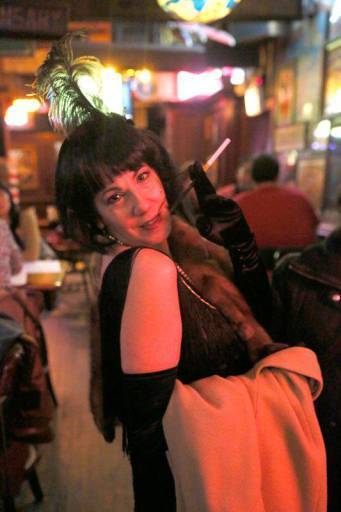
Renee The Flapper!
Photo credit: Charles Osgood
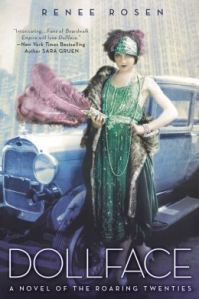 Amy: I know that it took you ten years to write DOLLFACE and have it published! How is the novel different today than it was a decade ago?
Amy: I know that it took you ten years to write DOLLFACE and have it published! How is the novel different today than it was a decade ago?
Renee: Great question! It started out to be two interconnected stories from two different time periods, the 1900s and the 1920s. When I realized that I was racing through the 1900s to get to the 1920s chapters, I tossed out the earlier time period and just went full throttle into the Roaring Twenties.
But even then the story still changed a great deal. Originally I was much more focused on the gangsters themselves and had the women standing on the sidelines observing everything. It was at the advice of a very wise editor that I flipped all that around, turned the book inside out and started rewriting the story from the woman’s P.O.V.
Amy: Over the course of those ten years, did you ever lose hope or faith that one day DOLLFACE would make its way to bookstore shelves? What did you do to get back on track and go forth?
Renee: Ah, yeah! DOLLFACE broke my heart in a few places, that’s for sure. The people around me must have thought I was crazy for not giving up on the book. The rejection letters were mounting along with my bills. But each time I tried to walk away, something brought me back to that manuscript.
I remember reading what Kathryn Stockette went through with THE HELP and that was especially encouraging. After I read that she had gone to an outside editor, I went and did the same thing. Never ever underestimate the value of a good editor. And lastly, a very dear friend, also a writer, kept telling me to go back to DOLLFACE. Sara was convinced that this was the next book for me. Turns out she was right!
Amy: Without any spoilers, who’s your favorite character or what’s your favorite scene in DOLLFACE? What about it makes it your favorite? Was it easy or difficult to write?
Renee: Wow, another great question! And a difficult one to answer. I did love Vera but there was something about Basha that just cracked me up. I had such a hoot writing her scenes because I never knew what she was going to do next.
And as for scenes, there are a couple of those, too. A personal favorite is when Vera and her gun moll friends “crash” the Jewish Women’s Council luncheon. Another one is where Vera defends Evelyn by putting her abusive boyfriend, Izzy in his place.
Although there were a lot of revisions in those scenes (I’m a chronic reviser) those were two sections that practically wrote themselves. The characters just walked onto the page and started doing their thing.
Amy: I believe that many novels fall under the women’s fiction umbrella, including DOLLFACE of course. What are your thoughts on the label of women’s fiction and the fact that it often carries a negative connotation, unlike, let’s say, the historical fiction label.
Renee: I think there’s a general sense that “women’s fiction” isn’t taken seriously, or it isn’t literary, or something that would appeal to men. I also know a lot of excellent writers who feel the same way about their books being labeled as “genre fiction”.
I think these general labels exist in part so that booksellers know where to shelve the books in their stores and also so that publishers know how to talk to the public about a particular title. But regardless of what label someone gives to DOLLFACE, I’ve heard from several men who have read and enjoyed it, so who knows.
Amy: What’s your best advice for aspiring authors of women’s fiction of any kind?
Renee: Aside from the usual reading and writing, I think that each of us has to come to a point where we make up our minds that it’s going to happen. No debate. We’re going to be published because we’re willing to do whatever it takes to make that happen. That could involve hiring an outside editor or revising it for the umpteenth time. It could mean chucking the whole thing and starting something new. The main thing is to believe in yourself as a writer and stay determined. Be open to constructive criticism and yet, at the end of the day, learn to trust your instincts. It’s a tricky balance but you can do it!
As clichéd as it sounds, Renée is a former advertising copywriter who always had a novel in her desk drawer. When she saw the chance to make the leap from writing ad copy to fiction, she jumped at it. A confirmed history and book nerd, Renée loves all things old, all things Chicago and all things written.
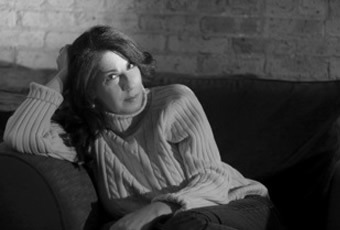 A graduate of American University in D.C., Renée has contributed to many magazines and newspapers, including Chicago Magazine, The Chicago Tribune, Complete Woman, DAME, Publisher’s Weekly and several other now sadly defunct publications. She is the author of Every Crooked Pot and Dollface, A Novel of the Roaring Twenties. She lives in Chicago where she is currently working on a new novel, What The Lady Wants coming from Penguin/NAL fall 2014.
A graduate of American University in D.C., Renée has contributed to many magazines and newspapers, including Chicago Magazine, The Chicago Tribune, Complete Woman, DAME, Publisher’s Weekly and several other now sadly defunct publications. She is the author of Every Crooked Pot and Dollface, A Novel of the Roaring Twenties. She lives in Chicago where she is currently working on a new novel, What The Lady Wants coming from Penguin/NAL fall 2014.
Find out more about Renee Rosen and DOLLFACE on her website: ReneeRosen.com.


November 6, 2013
Guest Post: Author Midge Raymond Talks About Being An Everyday Writer
 Talk about good timing! Today author Midge Raymond talks about being an everyday writer, and it’s just one week into Nanowrimo (National Novel Writing Month)! If you’re not familiar, from November 1 to November 30 bazillions of writers (I counted) will crank out 50,000 words. I bet each of them is writing every day!
Talk about good timing! Today author Midge Raymond talks about being an everyday writer, and it’s just one week into Nanowrimo (National Novel Writing Month)! If you’re not familiar, from November 1 to November 30 bazillions of writers (I counted) will crank out 50,000 words. I bet each of them is writing every day!
I’m not “nano-ing” this year, I’m revising a draft of my new novel. But I still want to do that every day. I think my favorite advice below is #5. Probably because I often forget to do it and realize how important it is. Tell us your favorite bit of advice in the comments below!
And please welcome Midge Raymond to Women’s Fiction Writers!
Amy xo
How to Be an Everyday Writer
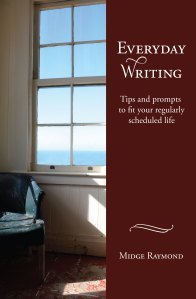 I remember the moment I got the idea for my book Everyday Writing, i.e., the moment I knew I needed a bit of an intervention as a writer. It was a few years ago, when I arrived early to meet a friend for happy hour at Seattle’s Pike Place Market. As I waited, I pulled out my phone — just to check email. Then to check Facebook. Then to play a couple rounds of Words with Friends. Then to text my husband.
I remember the moment I got the idea for my book Everyday Writing, i.e., the moment I knew I needed a bit of an intervention as a writer. It was a few years ago, when I arrived early to meet a friend for happy hour at Seattle’s Pike Place Market. As I waited, I pulled out my phone — just to check email. Then to check Facebook. Then to play a couple rounds of Words with Friends. Then to text my husband.
What I realized later, as I chatted with my friend, was how much I’d missed out on by having my nose buried in my phone. There was a couple waiting next to me who were exchanging irritable whispers in that way couples do so it won’t seem as if they’re actually arguing in public. There was a group of tourists celebrating someone’s birthday. While normally I’d have been eavesdropping and otherwise taking mental notes, I pretty much ignored it all. And I probably missed out on some great possibilities for my fiction.
As a journalist by training, it’s always been second nature for me to watch and listen — and this naturally carried over as I began writing fiction. More often than not, thanks to being curious (and, yes, a little nosy), I ended up with great story ideas or, at the very least, great snippets of dialogue. And yet, I realized that evening in Seattle, I was beginning to lose my connection to the world around me. And as writers, when we don’t pay close attention to what’s going on around us, we lose our connection to our creative selves. And while looking inward is vital for writers, so too is looking outward.
So I began to wonder how much “writing time” I was losing by looking to my cell phone instead of looking at what’s happening around me. What if I were to take these idle moments of every day — waiting for friends, standing in line — and devote them to writing?
And so I began to do just that … and I discovered that I could vastly increase the amount of writing time I had every day, even if I wasn’t sitting at my desk. And I also realized that there are probably many writers out there who might benefit from these tips and tools — and so Everyday Writing was born.
Here are a few tips to help you be an everyday writer …
Look. The more you observe in the world around you, the more material you’ll find, whether a detail for a character description or a storyline for a new novel. So pay attention, especially during the moments in which you’re usually bored (in line at the post office, for example, or waiting for your turn at the DMV) — and you’ll see that there’s a lot out there for your writer self to enjoy.
Listen. While you once may have been told it’s not polite to eavesdrop, if you’re a writer, all bets are off: Listen to everything. The nice thing about listening is that you can do it anywhere: in line at the grocery store, in the crowd of students while you’re waiting to pick up your own kid, and so on. You may also find that once you begin to listen more closely, your own conversations become deeper, more layered, and more interesting. The point, of course, is not to steal from others’ conversations but to let these overheard snippets spark your own creativity.
Develop writerly habits. Figure out where you do have a little extra time in your schedule. Can you skimp on a few household duties and still keep the place running? Probably. Can you give up an episode of Downton Abbey for some writing time instead? Maybe (well, maybe not). Can you trade an hour on Facebook for an hour of writing? Definitely. It’s amazing how much time we waste without even realizing it; figure out where your “lost time” is going and reclaim it for creative work.
Get in — and stay in — this writerly frame of mind. When you’re at the gym or out for a run, instead of listening to music, think about your characters; write the next scene in your head. If you’re stuck in traffic, turn off the radio and plot out the next chapter of your novel. These small moments of downtime and idle time can really add up — and if you fill them with thoughts about your writing projects, you’ll see your projects moving forward more briskly than you’d expect.
Always (always!) carry a notebook. Witnessing a fascinating moment does a writer no good if she forgets it later (which I invariably do if I don’t write things down). I carry a little notebook everywhere; you can also use a smartphone, and voice recorders are excellent for those who are in the driver’s seat a lot. Get in the habit of good note-taking so you won’t lose all the little treasures you pick up in your regularly scheduled life.
Most of all, remember that being a writer isn’t about sitting somewhere and typing. It’s about observing, listening, thinking, empathizing, dreaming, and so much more — these are the things that turn typing into writing.
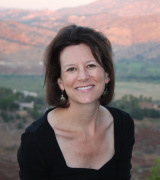 Midge Raymond is the author of the story collection Forgetting English, which received the Spokane Prize for Short Fiction. Originally published by Eastern Washington University Press in 2009, an expanded edition was published by Press 53 in 2011. She is also the author of Everyday Writing: Tips and Prompts to Fit Your Regularly Scheduled Life, and the companion title Everyday Book Marketing. Her award-winning stories have appeared in TriQuarterly, Bellevue Literary Review, the Los Angeles Times, and many other publications.
Midge Raymond is the author of the story collection Forgetting English, which received the Spokane Prize for Short Fiction. Originally published by Eastern Washington University Press in 2009, an expanded edition was published by Press 53 in 2011. She is also the author of Everyday Writing: Tips and Prompts to Fit Your Regularly Scheduled Life, and the companion title Everyday Book Marketing. Her award-winning stories have appeared in TriQuarterly, Bellevue Literary Review, the Los Angeles Times, and many other publications.


November 4, 2013
Guest Post: Author Allison Winn Scotch Finds Joy—And A Great Story—By Writing For Herself
 I haven’t said this in a while: I met this author on Backspace!
Allison Winn Scotch was one of the very first published authors who treated me like someone who absolutely would one day be published. She was (and is) generous with her knowledge and time. I’m thrilled to welcome Allison back to Women’s Fiction Writers in celebration of her FIFTH novel. The traditional gift for a 5th anniversary is wood. OMG! Wood comes from trees! Wood pulp makes paper.
See the connection? (Humor me, will you?)
I haven’t said this in a while: I met this author on Backspace!
Allison Winn Scotch was one of the very first published authors who treated me like someone who absolutely would one day be published. She was (and is) generous with her knowledge and time. I’m thrilled to welcome Allison back to Women’s Fiction Writers in celebration of her FIFTH novel. The traditional gift for a 5th anniversary is wood. OMG! Wood comes from trees! Wood pulp makes paper.
See the connection? (Humor me, will you?)
There’s a very special story behind the story of THE THEORY OF OPPOSITES and today Allison shares this with us, in addition to the best writing advice ever: WRITE FOR YOURSELF.
Please welcome Allison Winn Scotch to WFW!
Amy xo
Finding Joy—And A Great Story—By Writing For Myself
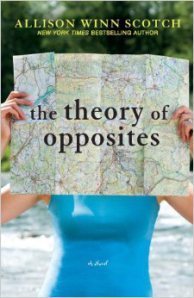 I’m about to publish my fifth book. Whew! Way back when, when I first tried my hand at fiction, when I wrote a (terrible) manuscript that was never published, when I was a freelance magazine writer who felt the tug toward novels…never in my wildest fantasies did I imagine that this is where I’d be seven years later. Five books. Well, hot damn.
I’m about to publish my fifth book. Whew! Way back when, when I first tried my hand at fiction, when I wrote a (terrible) manuscript that was never published, when I was a freelance magazine writer who felt the tug toward novels…never in my wildest fantasies did I imagine that this is where I’d be seven years later. Five books. Well, hot damn.
Writing each book has been a different experience than the last, and no more so than with my new one, The Theory of Opposites. My debut novel was a bit like losing my virginity (forgive the visual): I fumbled, I screwed-up, I learned as I went along, eventually, figuring out (mostly) what I was doing. My second book, Time of My Life, was a frantic joy of a novel – I wrote it quickly and obsessively, purging myself of the story. My third was my least favorite writing experience – I felt saddled by the success of Time of My Life, and put immense pressure on myself to top my own standards of what I was willing to publish. It was agonizing, and I still look back on that book and grimace, whether or not the pages inside justify my feelings. I wanted my fourth book to be…deeper…heavier, (who knows why?), perhaps…taken more seriously. So as I wrote, I kept this in mind – what would critics say? What would readers say? And I love that book, but certainly, I wrote it with one-eye on a critical prize.
But this new book? Here is what I did: I wrote it for ME. Just me. Only me. Me, myself, and I. And it was the best professional experience of my life. It’s harder than you think – writing for yourself. Ignoring the voices of readers that you can hear in your head. Ignoring what you suspect Publisher Weekly or Kirkus will write up about you. Ignoring the evisceratingly mean barbs that some random person will shoot your way on Goodreads. But if you can find the way to block out all of those other voices, all of that extra noise, you’ll find the writing process liberating. Or at least, I did.
Here is what I decided: that I was going to go balls-out. And when you go balls-out in your writing, your characters become sharper, your plot lines become more daring, your dialogue becomes more punctuated. You have nothing to lose because you are writing on the edge. You’re not writing to please a marketing team; you’re writing because you love it. It’s not easy, to separate the writing process from the publishing process. I had to constantly remind myself not to read my pages from the perspective of “how sellable” they were; it didn’t matter – this book was for me, not the sales team or the marketing team or an editor who wouldn’t agree with my choices. I also had to constantly remind myself to listen to my gut, and that by listening to my gut – and honoring my instincts – I’d find renewed joy and happiness in the writing. And that the writing was the better for it.
Right now in our industry, there are a lot of things that writers are told we can’t do, or we aren’t doing. You’re not selling enough; you don’t merit more co-op; you can’t control your pricing or your advertising or a whole host of things that happen once you file the manuscript with your publisher. What you can control is the craft on your pages. You can control who you are writing for and how much joy that brings you. I know you can control it because I did. I love this book, I love the process that I took in writing this book, and I love the satisfaction that taking back control has given me. Try it. Write for yourself. Everything about it will liberate you – and in turn, your book will be all the better for it. (Which then, of course, means that readers will love it.) 
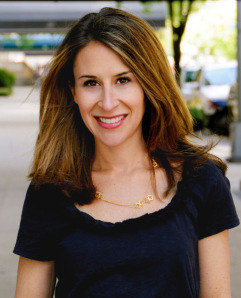 Allison Winn Scotch is the bestselling author of four novels, including TIME OF MY LIFE, THE SONG REMAINS THE SAME, THE ONE THAT I WANT, and THE DEPARTMENT OF LOST AND FOUND. Her fifth novel, THE THEORY OF OPPOSITES, will be released on November 12, 2013. In addition to fiction, she pens celebrity profiles for a variety of magazines, which justifies her pop culture obsession and occasionally lends to awesome Facebook status updates. She lives in Los Angeles with her family. For more about her and her books, go to allisonwinn.com or follow her on Twitter at @aswinn.
Allison Winn Scotch is the bestselling author of four novels, including TIME OF MY LIFE, THE SONG REMAINS THE SAME, THE ONE THAT I WANT, and THE DEPARTMENT OF LOST AND FOUND. Her fifth novel, THE THEORY OF OPPOSITES, will be released on November 12, 2013. In addition to fiction, she pens celebrity profiles for a variety of magazines, which justifies her pop culture obsession and occasionally lends to awesome Facebook status updates. She lives in Los Angeles with her family. For more about her and her books, go to allisonwinn.com or follow her on Twitter at @aswinn.


Women's Fiction Writers
- Amy Sue Nathan's profile
- 543 followers


